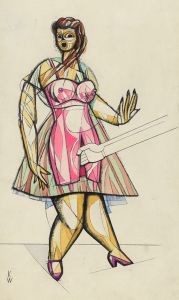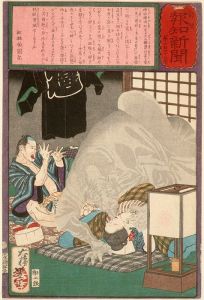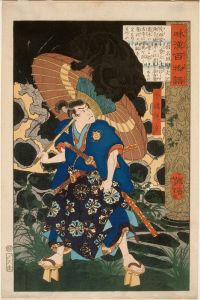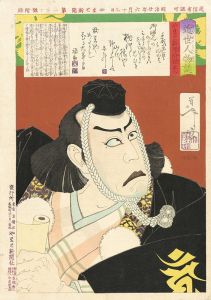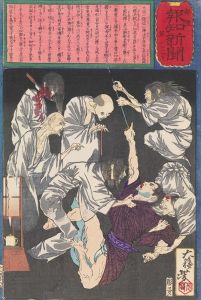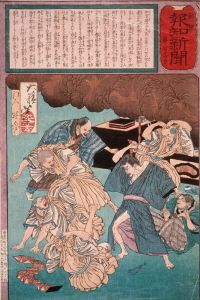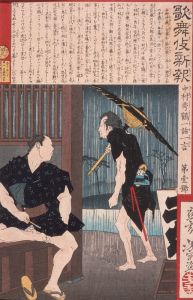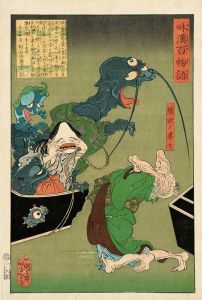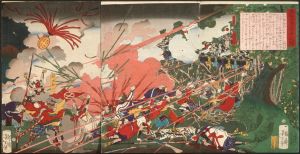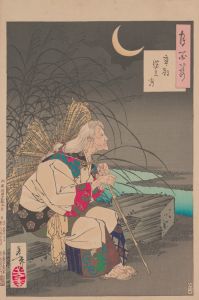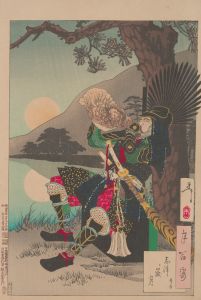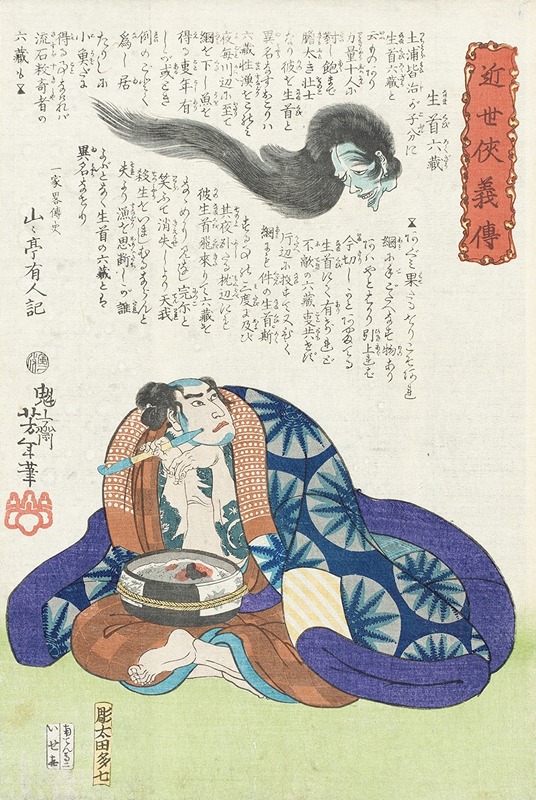
Namakubi Rokuzō Watching a Head Fly through the Air
A hand-painted replica of Tsukioka Yoshitoshi’s masterpiece Namakubi Rokuzō Watching a Head Fly through the Air, meticulously crafted by professional artists to capture the true essence of the original. Each piece is created with museum-quality canvas and rare mineral pigments, carefully painted by experienced artists with delicate brushstrokes and rich, layered colors to perfectly recreate the texture of the original artwork. Unlike machine-printed reproductions, this hand-painted version brings the painting to life, infused with the artist’s emotions and skill in every stroke. Whether for personal collection or home decoration, it instantly elevates the artistic atmosphere of any space.
Tsukioka Yoshitoshi was a prominent Japanese artist of the late Edo and early Meiji periods, renowned for his woodblock prints and contributions to the ukiyo-e genre. One of his notable works is "Namakubi Rokuzō Watching a Head Fly through the Air," which exemplifies his unique style and thematic focus on dramatic and often macabre subjects.
Yoshitoshi was born in 1839 and began his artistic training under the tutelage of Kuniyoshi, one of the last great masters of the ukiyo-e tradition. Throughout his career, Yoshitoshi was known for his innovative approach to traditional Japanese art, often incorporating elements of Western art that were becoming more prevalent during the Meiji Restoration. This period was marked by significant cultural and political changes in Japan as the country opened up to Western influences after centuries of isolation.
"Namakubi Rokuzō Watching a Head Fly through the Air" is a striking example of Yoshitoshi's work, reflecting his fascination with the themes of violence, death, and the supernatural. The title itself, "Namakubi," refers to a severed head, a motif that appears in several of Yoshitoshi's works. This particular piece captures a moment of intense action and emotion, as the character Rokuzō witnesses a head flying through the air. The composition is dynamic, with a strong sense of movement and tension, characteristic of Yoshitoshi's ability to convey drama and psychological depth.
Yoshitoshi's work often explored the darker aspects of human nature and the supernatural, drawing inspiration from Japanese folklore, history, and literature. His prints frequently depicted scenes of warriors, ghosts, and mythical creatures, rendered with meticulous detail and vibrant colors. Despite the often gruesome subject matter, Yoshitoshi's art is celebrated for its beauty and technical skill, as well as its ability to evoke a powerful emotional response from the viewer.
The Meiji era was a time of great transition for Japan, and Yoshitoshi's work reflects the tensions and anxieties of this period. As traditional Japanese society grappled with modernization and Westernization, Yoshitoshi's prints served as a bridge between the old and the new, preserving the cultural heritage of the past while also embracing contemporary influences. His work is often seen as a commentary on the changing times, capturing the complexities and contradictions of a society in flux.
Yoshitoshi's legacy is significant, as he is considered one of the last great masters of the ukiyo-e tradition. His innovative approach and willingness to tackle challenging subjects have earned him a lasting place in the history of Japanese art. "Namakubi Rokuzō Watching a Head Fly through the Air" is a testament to his skill and vision, showcasing his ability to blend traditional techniques with a modern sensibility.
Today, Yoshitoshi's works are highly regarded by collectors and scholars alike, appreciated for their artistic merit and historical significance. His prints continue to be studied and exhibited around the world, offering insight into the cultural and artistic landscape of 19th-century Japan. Through his art, Yoshitoshi has left an indelible mark on the world of ukiyo-e, influencing generations of artists and ensuring that his legacy endures.





